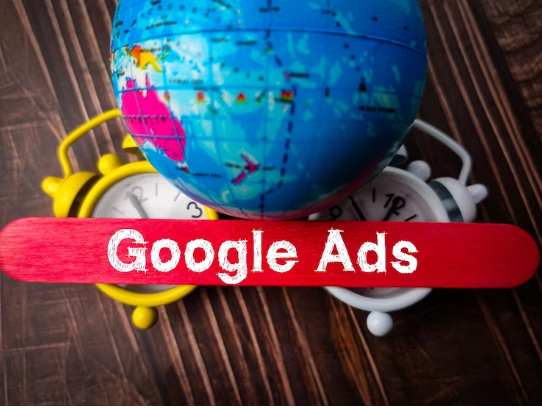
Unveiling the Power of Google AdWords: A Beginner’s Guide to Effective Online Advertising
In the dynamic world of online marketing, Google AdWords stands as a beacon for businesses seeking to enhance their online visibility and attract potential customers. This comprehensive guide aims to demystify Google AdWords for novices, unraveling its essence, elucidating its benefits, and providing a step-by-step walkthrough on how to set up a successful AdWords campaign.
I. Understanding Google AdWords:
-
What is Google AdWords? Google AdWords, now known as Google Ads, is an online advertising platform developed by Google. It allows businesses to create and run ads that appear on Google’s search engine results pages (SERPs) and across its network of partner websites.
-
How Google AdWords Works: Advertisers bid on specific keywords relevant to their products or services. When users search for these keywords, Google runs an auction, determining which ads to display and in what order based on bid amount, ad quality, and relevance.
II. The Benefits of Google AdWords:
-
Targeted Advertising: Google AdWords enables precise targeting based on keywords, location, demographics, and user behavior. This ensures that your ads reach a specific and relevant audience, increasing the likelihood of conversion.
-
Immediate Visibility: Unlike organic search engine optimization (SEO), which takes time to yield results, Google AdWords offers immediate visibility. Your ads can appear on the first page of Google’s SERPs as soon as your campaign goes live.
-
Flexible Budgeting: Advertisers have full control over their budget. You set a daily or monthly budget, and you only pay when users click on your ads (Pay-Per-Click or PPC). This flexibility allows businesses of all sizes to participate in online advertising.
-
Measurable Results: Google AdWords provides detailed analytics and reporting tools. Advertisers can track key metrics such as clicks, impressions, click-through rates (CTRs), and conversion rates. This data enables informed decision-making and optimization of campaigns.
-
Customizable Ad Formats: Google Ads supports various ad formats, including text ads, display ads, video ads, and app promotion ads. Advertisers can choose the format that aligns with their goals and target audience.
III. Setting Up Your First Google AdWords Campaign:
Step 1: Create a Google Ads Account
-
Visit Google Ads: Go to the Google Ads website (https://ads.google.com) and click on “Start Now.”
-
Sign in or Create an Account: Sign in with your existing Google Account or create a new one if you don’t have an account.
Step 2: Explore the Google Ads Dashboard
-
Navigate the Dashboard: Familiarize yourself with the Google Ads dashboard. Key sections include Campaigns, Ad Groups, Keywords, and Ads.
-
Set Campaign Goals: Click on “Campaigns” and select the campaign type that aligns with your advertising goals. Common types include Search, Display, Video, and App campaigns.
Step 3: Configure Campaign Settings
-
Campaign Name and Type: Name your campaign and choose the campaign type based on your objectives.
-
Networks and Locations: Select where you want your ads to appear – on the Google Search Network, Google Display Network, or both. Specify the geographic locations you want to target.
-
Bidding and Budget: Set your bid strategy and daily budget. Google Ads provides automated bidding options, or you can manually set your bids.
Step 4: Create Ad Groups and Ads
-
Ad Group Creation: Group your ads into ad groups based on related themes or keywords. This allows for more targeted and organized campaigns.
-
Keyword Selection: Choose relevant keywords for each ad group. Google Ads provides a Keyword Planner tool to help discover keywords.
-
Ad Creation: Craft compelling ad copy and headlines. Include a clear call-to-action and relevant keywords. For display ads, create visually appealing graphics.
Step 5: Review and Launch
-
Review Your Campaign: Double-check all settings, ad copy, and targeting options. Use the preview tool to see how your ads will appear.
-
Launch Your Campaign: Once satisfied, click “Launch Campaign.” Your ads will undergo a review process by Google, and once approved, they will start appearing to your target audience.
IV. Monitoring and Optimization:
-
Regularly Monitor Performance: Keep a close eye on your campaign performance through the Google Ads dashboard. Analyze metrics such as CTR, conversion rate, and cost per conversion.
-
A/B Testing: Experiment with different ad variations, headlines, and keywords. A/B testing helps identify which elements are most effective in driving results.
-
Adjust Bids and Budgets: Based on performance, adjust your bids and budgets. Allocate more resources to high-performing keywords or ad groups.
-
Utilize Analytics: Integrate Google Analytics to gain deeper insights into user behavior on your website. Use this data to refine your campaign strategy.
Conclusion:
Google AdWords, now Google Ads, empowers businesses of all sizes to reach a global audience and achieve their marketing goals. By understanding the fundamentals, harnessing the benefits, and following a step-by-step guide to set up your first campaign, you can embark on a journey of effective online advertising. Keep in mind that continuous monitoring, optimization, and adaptation to evolving trends are crucial for sustained success in the dynamic world of Google Ads. As you navigate this powerful advertising platform, you open doors to increased visibility, customer engagement, and business growth.


